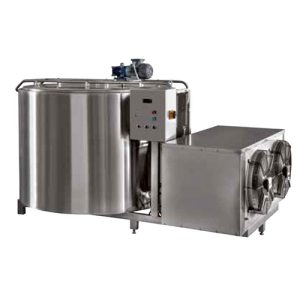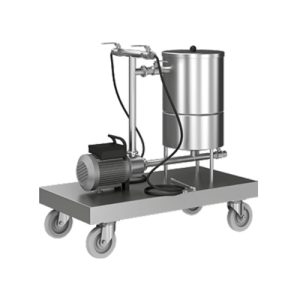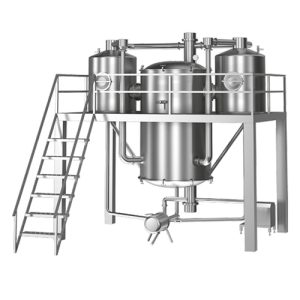![yogurt-fermentasyon-kapak[1]](https://inoksprom.com/wp-content/uploads/2024/02/yogurt-fermentasyon-kapak1.jpg)
Yogurt Fermentation Tanks
- Description
- Reviews (0)
Description
INOKSPROM Yogurt Fermentation Tanks; They are enclosed units where yoghurt milk, pasteurized and cooled to yoghurt fermentation temperature (43-45 C), ferments and becomes yoghurt through the fermentation process within a period of 3-4 hours.
Tank Design
The inner and outer surfaces of the tank are made entirely of AISI304 stainless steel. The temperature of the fermented yoghurt milk must remain constant throughout the fermentation process, so Yoghurt Fermentation Tanks are covered with rock wool insulation to minimize heat exchange with the environment.
Yogurt Fermentation Tanks with capacities of 2000 liters and above have a complete stainless steel ladder with an anti-slip design along the side outer wall.
The tanks have 4 legs and their height can be adjusted. Although inlet and outlet connection diameters vary depending on tank capacity, it is produced integrated with a hygienic stainless butterfly valve.
When the fermentation process is completed, the milk loses its fluid structure and turns into yoghurt, which has a more stable, gel-like structure. That’s why Yogurt Fermentation Tanks; In addition to standard propeller type milk mixers, they are equipped with edge scrapers to prevent product losses that may result from product adhesion to the wall and to provide more effective and homogeneous mixing. The mixer engine is mounted vertically on the tank upper body, and the engine power increases and decreases according to the tank capacity.
Tank Cleaning
Cleaning of Yogurt Fermentation Tanks; It is done with CIP washing balls integrated into the upper part of the tank. The size of CIP guns varies depending on tank capacity.
Yeast/Culture Addition
For easy observation of yeast addition and fermentation process; There is a 45 C opening “man hole” cover on the upper walls of the tank. Heat loss that may arise from the cover is prevented by EPDM type gaskets.
Control
There is a PT100 temperature transmitter to instantly control the temperature in the tank. Since fermentation process control only includes time and temperature control, there is no need for automation; Optionally, by integrating a fully automatic control panel, it is possible to automatically activate the tank cooler or start the cooling process of the product in the tank through the Yogurt Cooling Exchanger upon completion of the pre-defined fermentation process.
Cooling
The new product, which completes the fermentation process and becomes yoghurt; In order to prevent further acidity, it should be mixed quickly, cooled to at least 20 C and started filling.
Cooling is provided by two different methods:
First method; The tank is designed with cooling walls and the cooling process takes place in the tank.
In this method, it is possible to achieve a more standard quality since the temperature of the entire product will decrease simultaneously and equally throughout the process, but it is a relatively slow process. Cooling process in the tank; This is possible by activating a cooling engine integrated into the tank itself and providing cold water circulation on the tank wall, or by activating the factory’s Ice Water/Chiller unit and supplying ice water to the tank wall.
The second method is Yogurt Cooling exchangers . By keeping the heat exchanger capacity high, a faster and more continuous cooling process is possible; Variations in the fermentation processes of the yoghurt mass that leaves the tank first and the mass that leaves the tank last may cause slight standard differences .
| Detail | Explanation |
|---|---|
| Material | AISI304 Stainless Steel |
| Design | Vertical, Cylindrical, Bottom and Top surfaces Conical |
| wall | Rollbond, Dimple Plate |
| Insulation | Rock Wool Insulation
50mm All Side and Bottom Tank Walls |
| Inner Wall Thickness | 3 mm (On all surfaces) |
| Insulation Surface Thickness | Body: 1.5 mm Base: 2 mm |
| Mixer | Axial Central Vertical Mixer/Edge Scraper |
| blender engine | 1000 liters | 2000 liters | 3000 liters | 5000 liters
1.1kW | 1.5 kW | 2.2 kW | 4 kW |
| Mixer Speed | 20-25rpm |
| CIP Washing Ball | Rotary Type, Hygienic Stainless Steel |
| Ventilation | Integrated into the tank upper body, 120 mm |
| feet | 3 pieces, Hexagon, Adjustable feet |





Reviews
There are no reviews yet.